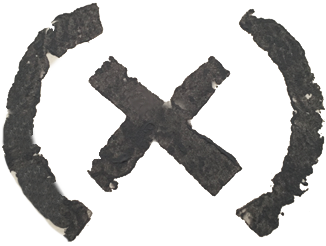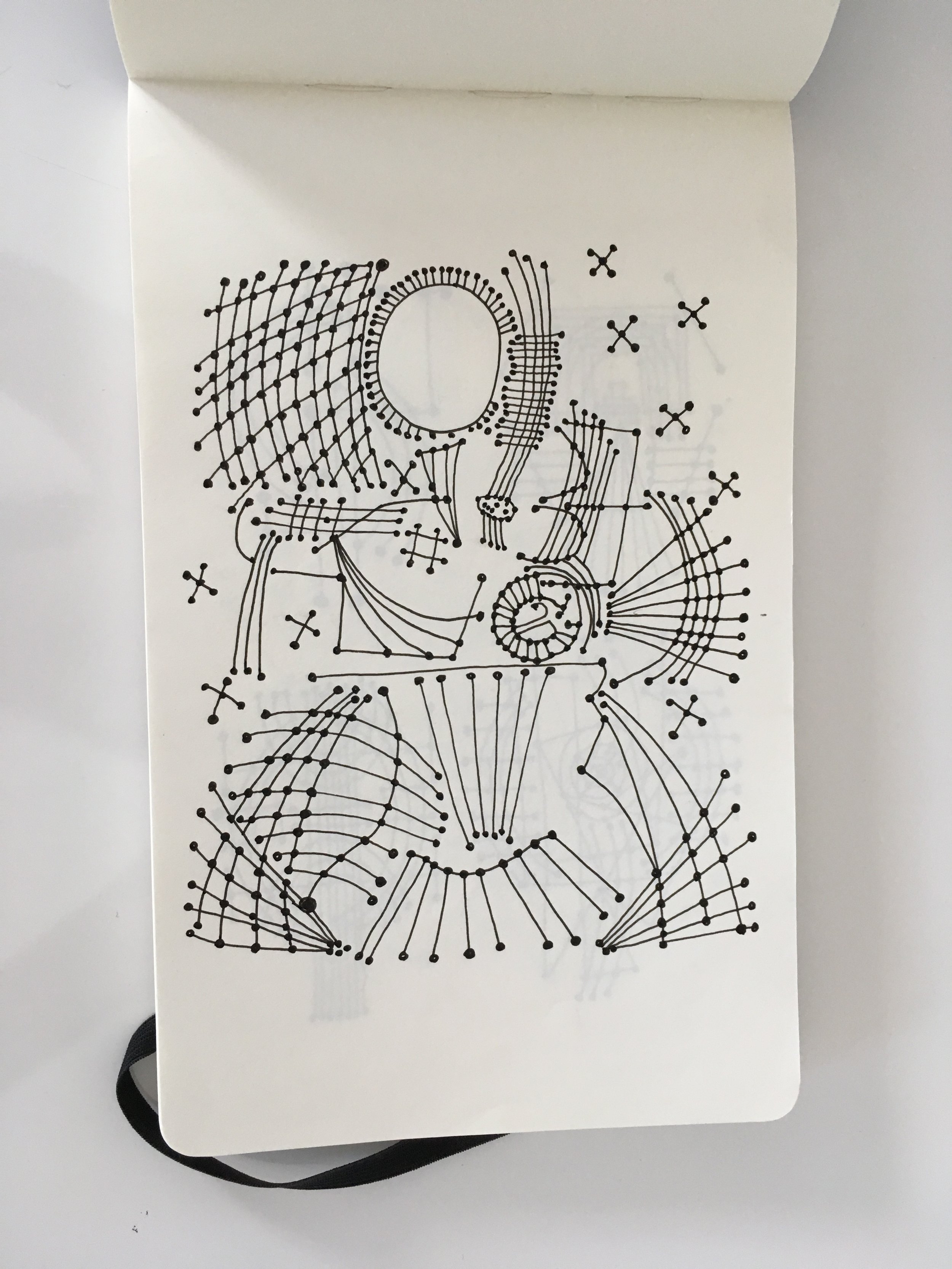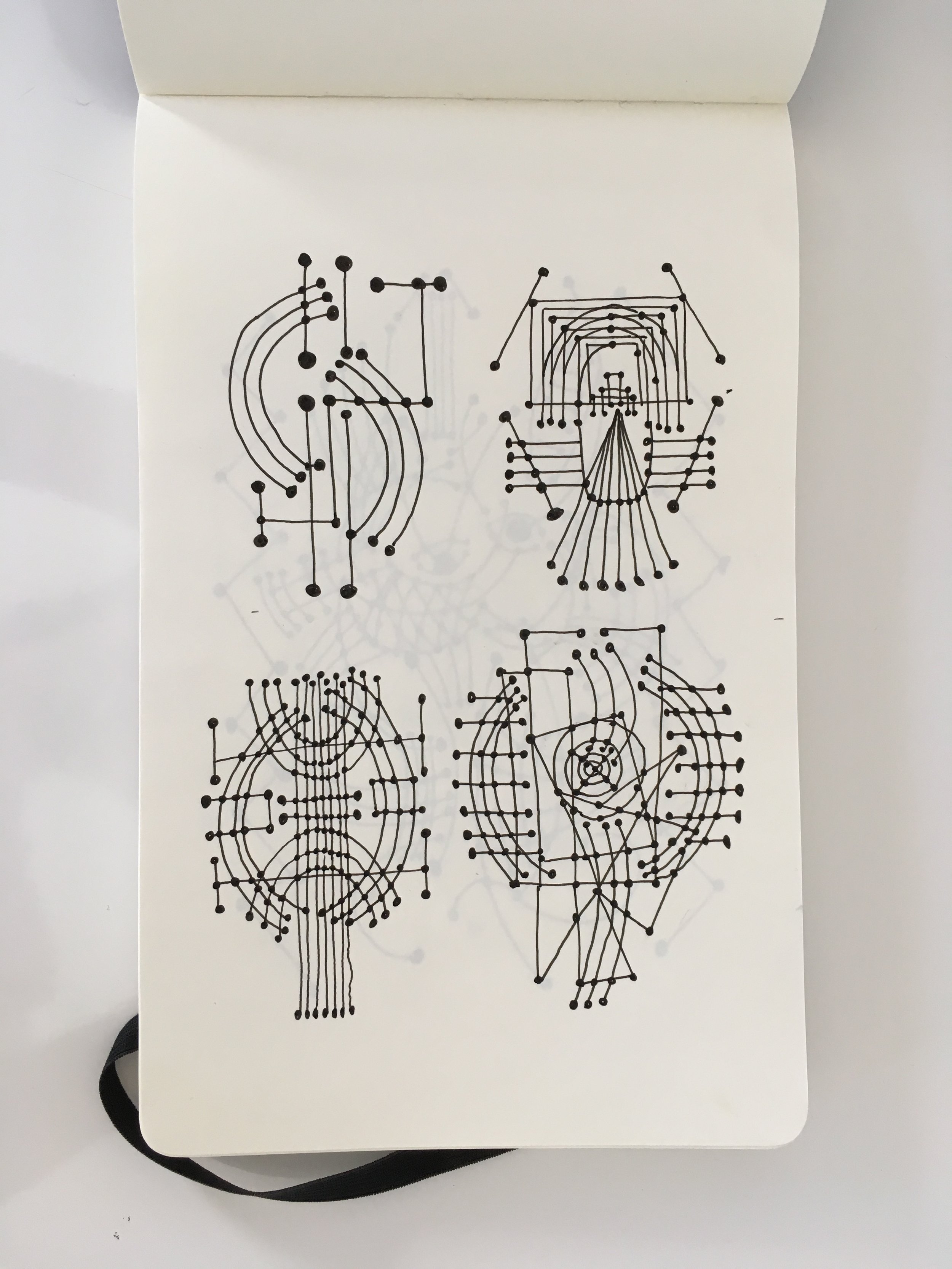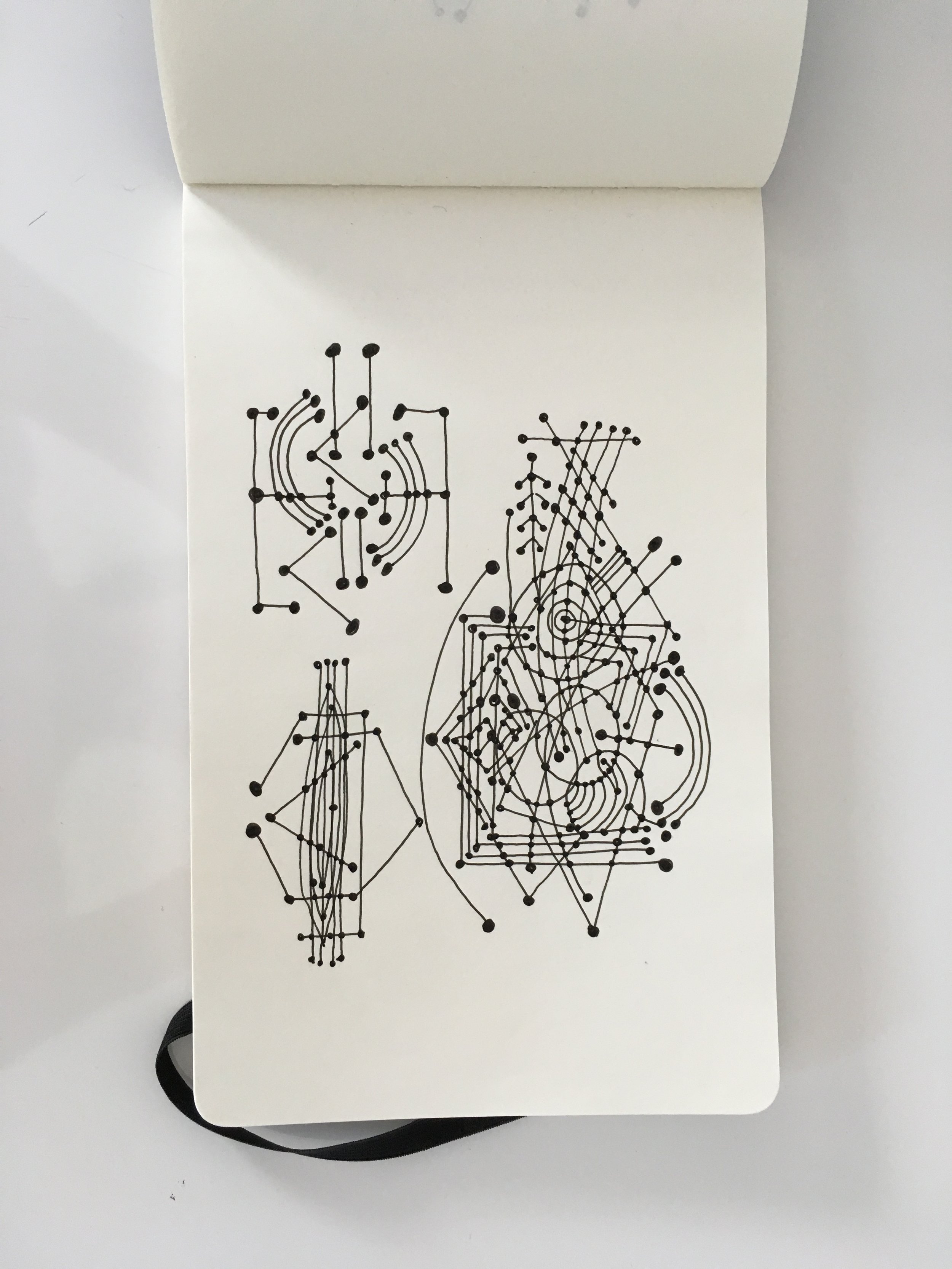Picasso's Constellations
fake: D. Daley
2018, ink on paper in notebook
"she becomes so obsessed with a defect in her depiction of that dot she goes mad, destroys the cheesecake, and leaves the room..."
original: Pablo Picasso
1924, ink on paper in notebook
"he becomes so obsessed with a defect in his depiction of her foot that he goes mad, destroys the painting, and kills himself."
“Pablo Picasso shocked me.
I know. Such a thing should be impossible, forty years after the artist’s death, and a century after he began the career that would change the direction of Western Art...
No, my shocking moment came with, of all things, a book. In 1927, French art dealer Ambroise Vollard commissioned Picasso to illustrate a new, limited edition of Honoré de Balzac’s novella, Le chef-d’oeuvre inconnu (The Unknown Masterpiece). The story concerns the old painter Frenhofer, who has been unable to finish a single work for ten years, until he is introduced to a young woman who will become his new model. She is so beautiful Frenhofer is inspired to quickly finish the painting, but he becomes so obsessed with a defect in his depiction of her foot that he goes mad, destroys the painting, and kills himself. The short story, updated, was made into a famous, four-hour Jacques Rivette film, La belle noiseuse, with Michel Piccoli and a frequently nude Emmanuelle Béart, and, much later, a suppressed episode of The Simpsons.
Picasso claimed to have become haunted by Balzac’s tale. Although it was not included in the 1931 reprint, he created his own woodblock, Le chef-d’oeuvre inconnu. It was rediscovered in a junk shop in 1972, but that’s another story. In 1936, Picasso moved to a studio at No. 7 rue des Grandes-Augustin, believed to have been the house in which Balzac’s novella began. The following year he painted Guernica there.
The Picasso and Chicago copy of Le Chef-d’œuvre inconnu is kept under plexiglass, away from greasy hands. Next to it, however, a video screen lets you move through the entire book, page by page...
Most of the illustrations are richly figurative, one splendid drawing after another until, flipping through the pages, I came across this . . .”







